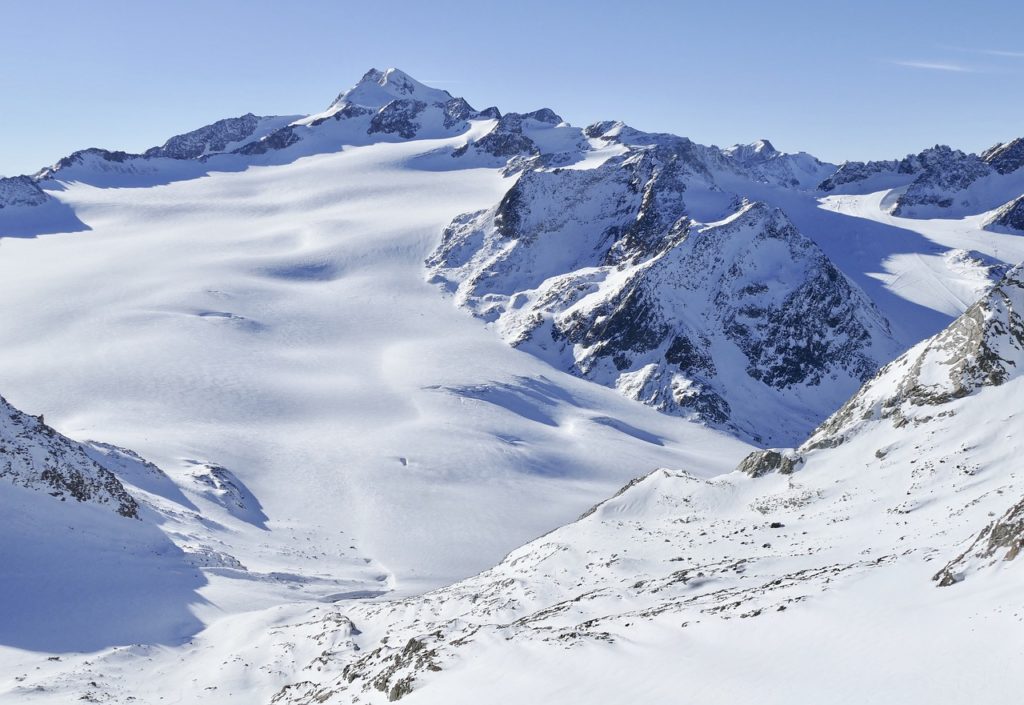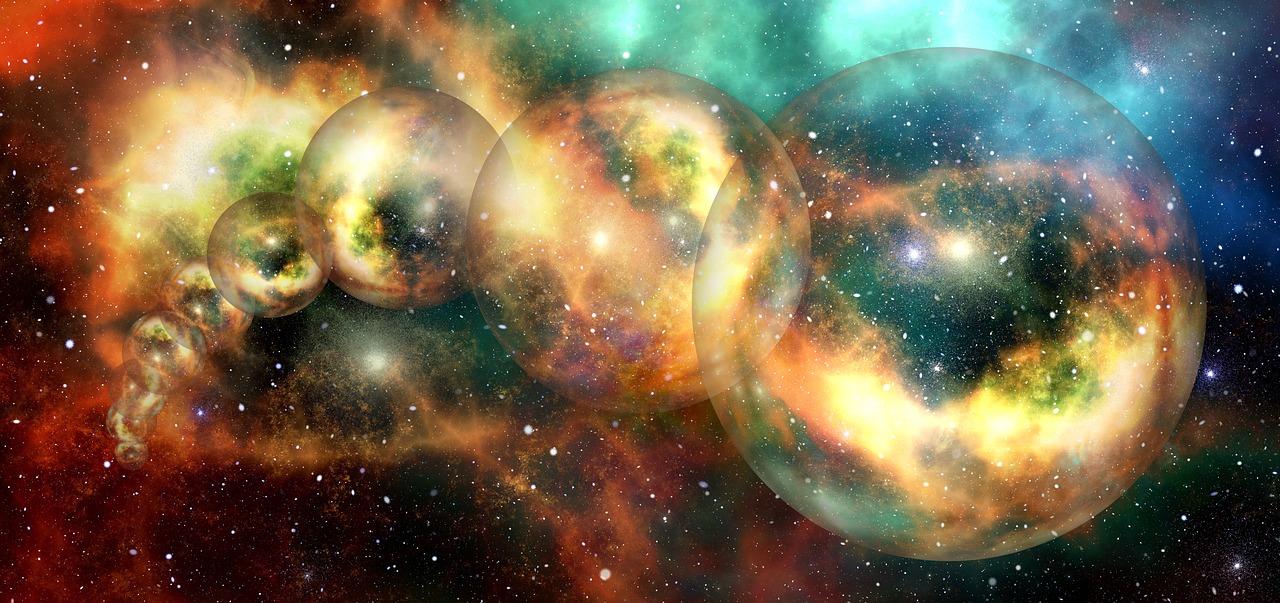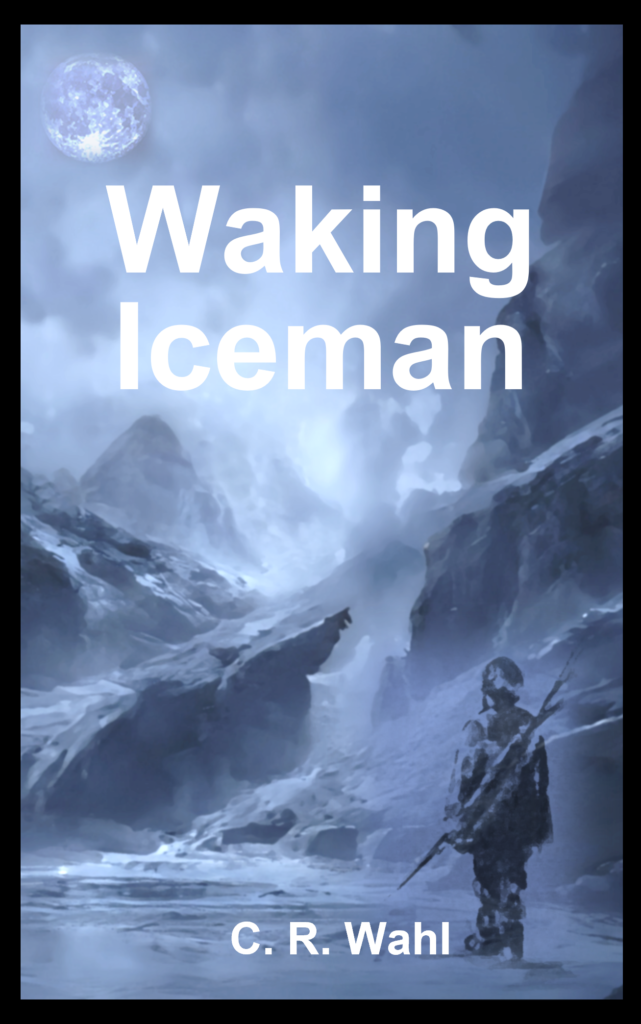A world where science and imagination meet the past . . .


The drama of Waking Iceman begins in the French Alps
Dosto would never forget when he and Arria first saw the glacier: They had come upon a nothingness, open, white, and cold. Together, they stared at the emptiness holding hands, wondering where it would take them. He remembered Arria squeezing his hand gently and then stepping onto the glacier—unaware that its cold hardness would soon show them no mercy.
Richard looked up toward the mountains. He suddenly felt a chill and pulled his jacket up close to his neck. To the northeast, he could see the Chartreuse and Belledonne mountains with their ragged tops dipped in pale blue snow. Beyond and further east was the Vanoise National Park, and within that, the Vanoise Glacier. Richard couldn’t quiet his thoughts.
What was the Iceman doing up there eight thousand years ago? Was Renee right? Was the Iceman trying to escape from something—or someone? And if so . . . why?

What story would a frozen ancient human tell if it could?
Having seen photos of Ötzi’s frozen body, Richard was shocked by the differences; the French Iceman’s skin, although a dark leathery brown, was less sunken than Ötzi’s. Where Ötzi’s skin looked like it had been vacuum-drawn down to the underlying bone, this one’s skin still had underlying fatty tissue, creating a softer appearance, and there was considerable brown hair covering his head.
Richard wondered. Does the remarkable preservation tell of a rapid freezing at the time of death, or some other factor?
Mummy talking
“We climb all day and our legs burn like fire. There was little food, so we eat the leaves of a plant we find the day before. After much time, it get very cold and start to be dark. We find a small cave to take us out of wind.”
“If it was so cold, why did you keep trying to go up the mountain?”
“When we first time come to the big mountain, where I die, we follow a line going through the sky. That is where we go. Where we want to go. But the eyes fool us, make us think it is close, but it is not.”
Lisa played back his words, “line going through the sky.” What does he mean? And then it dawned on her. “Ah,” she said, nodding slowly, “an edge against the sky—a ridge, you were going toward a ridge.”

Can the riddle of consciousness be solved?
Lisa roused herself and looked at the clock. She rolled to her feet and yawned and then stepped over to the lab monitor. She had dreamt the Iceman was calling her, or was it a plea? She brought up his neural activity map. His entire neurological structure, from the brain stem to the cortex, was showing low-level activity.
The reality finally hit home. He was in there—waiting, waiting for her to wake him. Lisa ran her fingers over the image on the screen, touching the shifting color patterns as they swayed and glided across like a school of fish. “Looks like you’re dreaming,” she whispered, “whoever you are . . .”

University Laboratories
See what it’s like inside university laboratories and how theory becomes reality
Professor Hans Verlink stood in front of a large whiteboard and faced the class. He rolled a black whiteboard marker between his fingers and waited for the next question. A curly-haired student wearing a baggy sweatshirt raised her hand. Verlink nodded in her direction. “Yes, Katrien.”
“If information is more fundamental than energy and mass, then why bother invoking the concepts of energy and mass in the first place?”
Verlink smiled. “Information can’t be stored in a vacuum and therefore relies on a physical reality for its existence—hence, we can’t have one without the other—but I believe it’s the information that is more fundamental. Think of the human brain. The individual cells help the brain store information, interact with its surroundings, and ultimately reach consciousness. But I ask you, which is more fundamental: the neurons and synapses that make up the brain, or the end result—consciousness?”

How far will robotic go?
Dosto’s hands grasped two black steel rails that ran on each side of a treadmill. He looked at Jacob and asked, “Can you explain what is going to happen one more time?”
Jacob pointed at the black rubber tread surface. “The surface you’re standing on will begin to move, and I want you to step your feet as if walking. You won’t fall, the cables will prevent that.”
Dosto looked up at two support cables attached to the lab ceiling. They dropped down to a harness secured around his waist. “I will try,” he said tentatively, “but can you make it go very slow?”
“I’ll be watching your every step,” said Jacob.
Lisa watched Dosto from a distance. She was curious whether the large and relatively heavy pack on his back affected his walking. The pack was Jacob’s brainstorm. It housed not only Dosto’s power pack but, oddly, his brain. The neural network was too large to fit into the volume of a conventional human head and the backpack gave Dosto complete mobility. Without it, he would have been tethered via cables to an immobile central control station.

Is information more fundamental than mass and energy?
“But you said the artifact is about converting information into energy. There has to be a way to reverse it so we get the energy.”
Verlink shook his head. “I don’t know how to make it any clearer to you.”
Blakefield waved his hand. “I think you’re afraid of it. You academics always see the sky falling. Christ, you’re afraid of everything from overpopulation to global warming. All alarmist bunk!” Blakefield shook the cylinder in front of Verlink. “How can this little cylinder be of any threat to any of us? Look at the size of it!”
Verlink rubbed his temples and then focused hard on Blakefield. “You can’t reinsert that cylinder—period. It doesn’t operate on principles you or any of us are familiar with. What little we do know is that once it starts doing what it was intended to do, there will be nothing to stop it.”
Blakefield’s eyes burned with his vision. “Once we figure this thing out, our scientists will make more—hundreds of them. Then you’ll see real power.”
Verlink tried one more time. “Let me put it this way. If one of the architects of the great pyramids found a cell phone, do think he could ever figure out how to make another one in his lifetime? Of course not—no matter how smart he was!
“There are just some things that are out of our technological reach. This artifact is like that cell phone, only considerably more sophisticated. As scientists, we can characterize it, understand small parts of it, but there is no way in hell we’ll ever be able to duplicate it. And on top of that, it was never meant to provide us with energy. It was meant to provide energy to the dual world inhabitants at the expense of our world.”

A Parallel Universe
What is a quantum dual world and how is it connected with an ancient frozen Neolithic human?
“This fluorescence looks the same as we observed from the cylinder back in the lab. It must be some kind of signature, resulting from the presence of the artifact existing in our world.”
Katrien thought for a moment. “Maybe we’ve been wrong thinking of the artifact as a fixed object in our world. What if it’s actually in a state of flux, continuously oscillating between our world and its quantum dual?”
Verlink nodded slowly. “Yes, it could be happening at the quantum level, so fast that we don’t realize it. Just like an LED lamp. It appears to be continuously on, when in fact it’s rapidly turning on and off at a rate too fast for our eyes to perceive.”
Enter the world of . . .

An 8000-year-old mystery is about to be solved—by the witness himself.
Two mountain climbers in the French Alps have made a startling discovery—a perfectly preserved frozen Neolithic human. But who was this Iceman, what was he doing high on a glacier 8000 years ago, and why was he carrying a strange metallic cylinder?
Archaeologists can only speculate, but neuroscientist Doctor Lisa Cho knows a better way. Young and ambitious, Dr. Cho is at the threshold of developing technology capable of replicating the neural pathways of the human brain and has devised an audacious plan; she wants to wake the Iceman from his primeval slumber and let him provide the answers to his past.
But is she ready for what she will find?
If you love hard science fiction, adventure, thrills, and a love story, then the journey you’ll take reading the fast-paced chapters of Waking Iceman will keep you reading late into the evening.
More Excerpts from Waking Iceman:
It's beginning ...
At first, nobody saw it. It was hardly visible, ethereal—like the hint of orange-colored smoke. Then it began to take the form of a funnel with its small end centered over the cylinder and its large end extending over the trapped men. Katrien pointed at the radiating phantasm. “The air is ionizing from molecular collisions.”
Verlink squinted at the undulating mirage—it seemed alive. He understood. “The molecules are crowding as they rush toward the artifact.” He looked at Katrien and could see the orange chimera reflecting in her eyes. He thought about what Katrien had said. She was right, it was ionizing the air. Katrien was always right. She had become like a daughter to him, so young, brilliant, and now burdened with an awful truth: the end was coming.
All Hell is breaking loose
Lisa was mesmerized. Her palms began to sweat as she watched an abandoned Peugeot become its next victim. The churning mass descended onto the van like a horde of angry hornets. The vehicle’s metal sides began to vibrate with a steady thrum, emitting a plaintive wail that made the hairs on the back of Lisa’s neck stand up. The van shuddered as the ground beneath it quaked, and then in an instant, the van and everything around it winked out of existence.